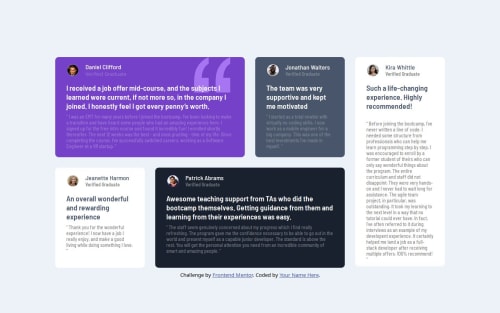html,css

Solution retrospective
I believe if I do it again, I would do it better.
What challenges did you encounter, and how did you overcome them?Designing the grid was my biggest challenge.
What specific areas of your project would you like help with?I would appreciate any help to improve the code.
Please log in to post a comment
Log in with GitHubCommunity feedback
- @TomrocheDev
Good take on this solution! The design looks really good and professional.
You request on help with cleaning up your code: First of all, your code looks fine to me. You use the right tags, which makes your code structured. What I would avoid, is the over-use of classnames. Not all tags need a classname (in my opinion). The thing I also would avoid, is the long classnames like "container__section_header_div_name", "container__section_texto1" and "container__section_texto2". These long classnames make your code hard to read, and it also makes elements hard to target when you want to change something. Like, when I read your CSS, I have to puzzle my way out to find out which properties are assigned to which element.
I would recommend to use short and declaritive classnames and try experimenting with targeting elements without classnames. This way you will learn how to target elements effectively without overusing classnames. A great resource for this is CSS Diner. https://flukeout.github.io/
Hope this helps!
Marked as helpful
Join our Discord community
Join thousands of Frontend Mentor community members taking the challenges, sharing resources, helping each other, and chatting about all things front-end!
Join our Discord